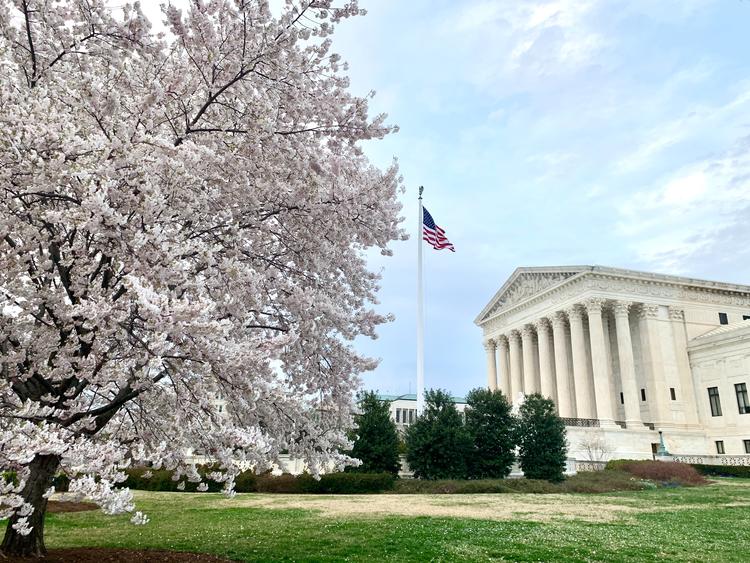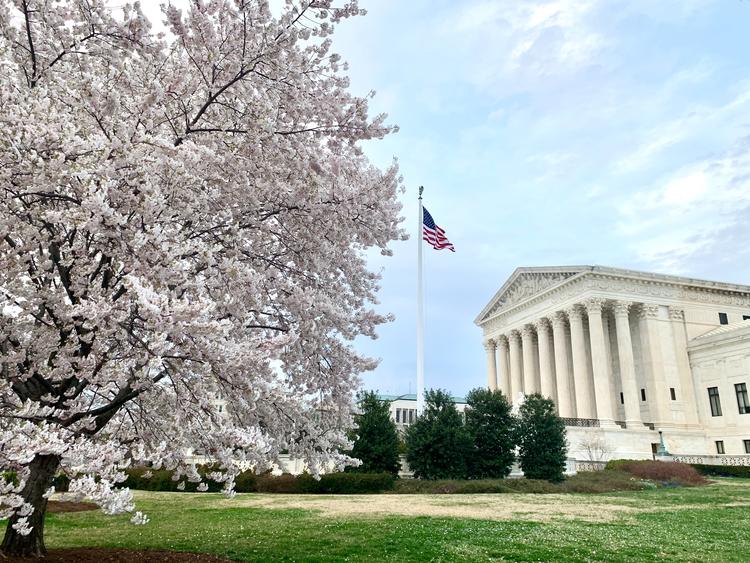By Naomi Cahn, University of Virginia and Sonia Suter, George Washington University | –
(The Conversation) – The U.S. Supreme Court issued an emergency ruling on April 21, 2023, that allows continued access to the abortion pill mifepristone in states where abortion is legal.
The court’s decision, which included few details and only indicated that Justices Clarence Thomas and Samuel Alito did not concur, follows a whirlwind legal process about whether people should be able to purchase mifepristone, one of two drugs used in a two-dose series for inducing a medical abortion.
On April 7, two federal district court judges halfway across the country from each other issued conflicting rulings about the validity of the Food and Drug Administration’s approval of mifepristone.
Within a week, yet another court issued a third opinion, which allowed mifepristone to continue to be prescribed, but under more limited circumstances. Two days after that, on April 14, the U.S. Supreme Court issued yet a fourth divergent opinion, albeit a temporary one, maintaining that the drug should be kept available while the court considered the most recent emergency ruling.
As scholars of reproductive justice, we have been carefully following these cases to make sense of what they mean for the FDA’s authority to approve drugs – and where that leaves access to medication abortion, which is used in more than half of all abortions today.
Photo by Bill Mason on Unsplash
One issue that confuses many people is how different courts can rule in contradictory ways.
But in fact, there are many instances when federal courts in one part of the country hand down decisions that conflict with those of other jurisdictions.
The federal system
It’s first useful to understand how the federal court system in the U.S. works. State-run court systems are entirely separate from the federal judicial system, which is where the mifepristone rulings are playing out.
Federal courts handle a variety of issues, including those relating to the United States government, the Constitution or federal laws, or controversies between states or between the U.S. government and foreign governments.
There are 94 federal district courts, organized into 12 regional circuits. The district courts are trial courts, where cases are presented to a judge or jury. Their decisions are bound by the legal doctrine established by their respective circuit courts, which handle appeals of cases from their constituent district courts. All of these courts are bound by Supreme Court decisions.
If there is no prior ruling to establish a precedent on the matter, federal district court judges can issue rulings based on their independent legal judgment. Consequently, district courts in different circuits can end up issuing separate rulings that contradict each other.
It’s relatively common for differences to arise between district courts – or even for different circuit courts to rule differently on appeals in similar cases.
Only the Supreme Court can issue an opinion that binds all circuits. So when there are disagreements between circuit courts, the Supreme Court can step in and make a decision for the whole country.
For example, the 6th Circuit, which serves Kentucky, Ohio, Michigan and Tennessee, upheld same-sex marriage bans in all four states in 2014. By then, four other circuits had reached the opposite result and struck down same-sex marriage bans. This set up, as one commentator explained, an “almost certain review by the Supreme Court,” particularly because this was “an issue of fundamental constitutional significance.”
Until the Supreme Court decided the issue in 2015, however, same-sex marriage was legal in some states, but not in others.
Other examples
There are many other examples where federal circuit courts disagree.
In 2018, the 7th Circuit Court of Appeals, which serves Illinois, Indiana and Wisconsin, ruled that an Indiana state law that banned abortions based on genetic anomalies was not constitutional. The Supreme Court decided not to take Indiana’s appeal of that ruling.
But in 2021, the 6th Circuit Court of Appeals upheld an Ohio law banning abortions based on one kind of genetic anomaly, Down syndrome. That created a circuit-court split of a sort usually resolved by the Supreme Court.
However, the Dobbs decision, which resolved a different abortion case, essentially dissolved the conflict by holding that the U.S. Constitution does not prevent states from banning abortions for any reason: They simply must show a “rational basis” that “would serve legitimate state interests.”
One other thing that confuses many people is how district courts can issue orders that go beyond the borders of their districts, and even their circuits, sometimes applying nationally. There is some scholarly dispute about this. Nevertheless, many judges have issued nationwide rulings on a wide range of issues, including migrant protection protocols, loan foregiveness and mask-wearing mandates.
The case of mifepristone
With this latest example of courts butting heads, Federal District Judge Matthew Kacsmaryk in Texas ruled first, on April 7. His decision took the form of a preliminary injunction, which is essentially a temporary ruling, until the court has a chance to go through a full trial. Kacsmaryk concluded that the FDA had exceeded its authority in approving mifepristone in 2000 and in loosening the prescribing restrictions over the years. As a result, he ruled that the drug’s approval should be revoked entirely.
Within an hour of Kacsmaryk’s ruling, Federal District Judge Thomas Rice in Washington state issued a contradictory ruling, which was also a preliminary injunction, declaring that the FDA’s approval of the drug and its uses should not be revoked.
While Kacsmarkyk’s ruling applied nationwide, Rice’s ruling applied only to the 17 states and the District of Columbia that were the plaintiffs in the suit he was handling. He noted that he had authority to make his ruling nationwide, but he also had discretion to limit the reach of the ruling to the parties that brought suit.
Where the issues stand
The Supreme Court’s ruling means mifepristone will remain as widely available as it was before. Fifteen states already restrict access to medication abortions.
“As a result of the Supreme Court’s stay, mifepristone remains available and approved for safe and effective use while we continue this fight in the courts,” President Joe Biden said in a White House statement.
But that decision is only in effect while the case is being decided by the 5th Circuit. Undoubtedly, that decision will be appealed to the Supreme Court again.
So far, no one has appealed the Washington district court opinion, although a potential future Supreme Court ruling after the 5th Circuit decision would also affect that case’s outcome. And the situation gets even more complicated, with a third lawsuit filed in a federal court in Maryland on April 19. That case was brought by GenBioPro, the manufacturer of a generic version of mifepristone, which the FDA approved in 2019. GenBioPro is seeking to preserve the approval of its drug, despite all the conflicting and confusing court rulings.
Although the Supreme Court majority said that it had hoped that the Dobbs opinion would end federal battles over abortion rights, there is more confusion and conflict than ever, in every corner of the country. And the confusion may continue for a while.
Naomi Cahn, Professor of Law, University of Virginia and Sonia Suter, Professor of Law, George Washington University
This article is republished from The Conversation under a Creative Commons license. Read the original article.




 © 2025 All Rights Reserved
© 2025 All Rights Reserved